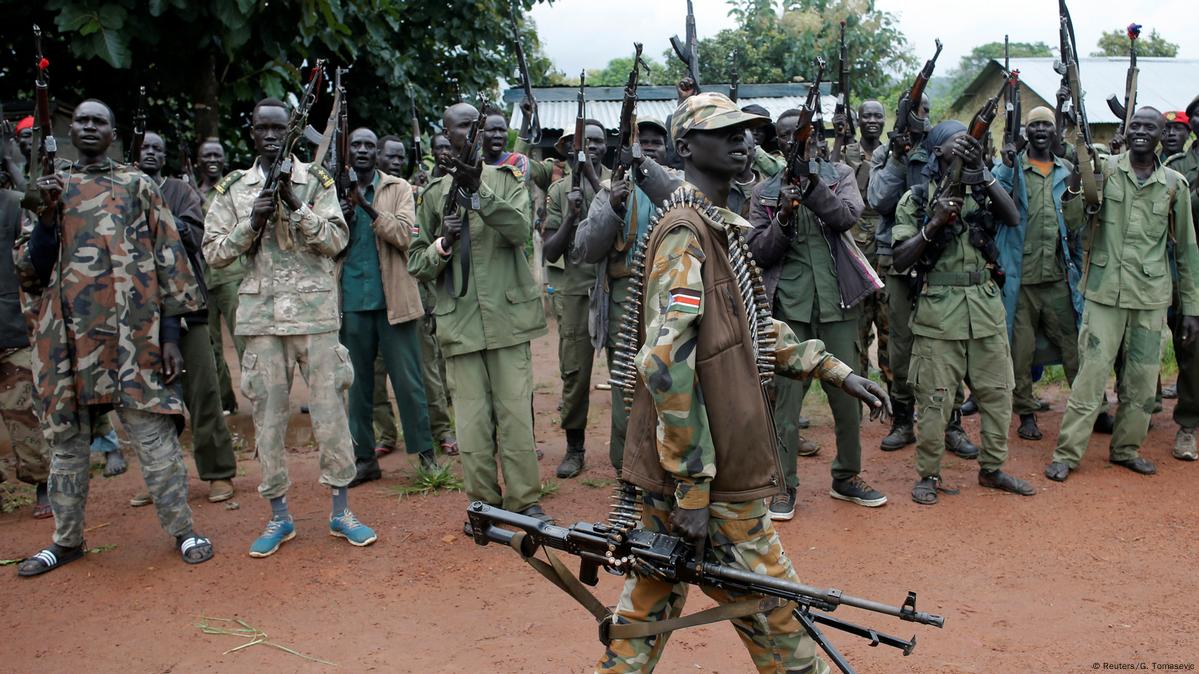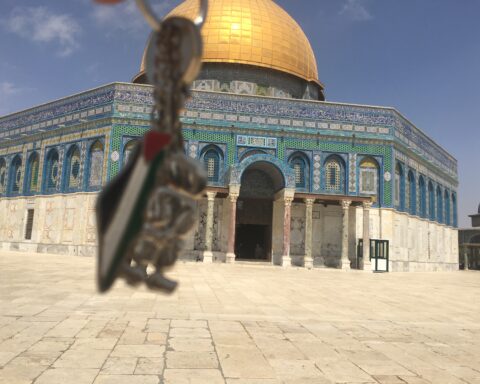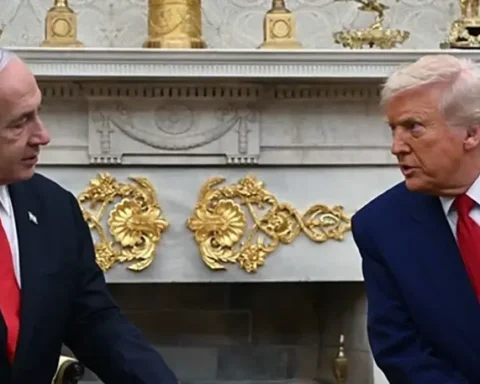The Wider Crisis
South Sudan is enmeshed in a structural political crisis with no clear exit. The conflict that erupted in Nasir is a symptom of this. The crisis can be defined as a slowly unfolding takeover of the state by President Salva Kiir Mayardit’s chosen successor within a militarized, patrimonial system that is refusing reform.
The escalation of conflict in Nasir on March 4, 2025, reflects structural fissures in the South Sudanese political system. These events are symptomatic of a broader failure of governance, trust, and accountability. The resurgence of violence in Nasir signals that the core tenets of the 2018 Revitalized Agreement on the Resolution of the Conflict in South Sudan (R-ARCSS) have not been honoured or implemented in good faith.
The state’s militarization of political space, economic collapse that incentivizes violence, and the exclusionary nature of national dialogue have created an environment ripe for local rebellion and regional destabilization. Nasir is a flashpoint, but it is also a mirror reflecting national decay
Crisis overview: Nasir as an indicator of systemic breakdown
The conflict in Nasir highlights the deepening crisis in South Sudan’s stalled post-conflict transition. It is not merely a case of local rebellion, but the violent manifestation of systemic collapse. The crisis is multifaceted. It includes failed peace implementation, weakened institutions, ethnic marginalization, and the erosion of state legitimacy. Nasir has become the crucible of a broader political unraveling.
The White Army is a loosely organized Nuer youth militia that first emerged in 1991 during the Second Sudanese Civil War, initially mobilized as a community defence force. Over time, it evolved into a volatile actor frequently aligned along ethnic and political lines. In recent years, it has operated in coordination with the Sudan People’s Liberation Movement in Opposition (SPLM-IO), the main armed opposition group led by Riek Machar. Formed in 2013 following the outbreak of civil war, the SPLM-IO positions itself as a movement representing reformist aspirations and marginalized communities within South Sudan’s fractured political landscape.
On March 4, 2024, joint forces of the SPLM-IO and the White Army launched a coordinated assault on a government garrison at Wech Yaradiu, reportedly killing over 400 government soldiers, including their commander Lt.Gen David.Majur Dak. In response, government forces conducted retaliatory air raids, with local reports alleging the use of incendiary munitions. Amid the fighting, a UNMISS helicopter on a humanitarian mission to evacuate trapped government soldiers in Nasir was shot down despite prior assurances of safe passage.
These developments reveal the scale and complexity of the crisis in Nasir. The region sits within a volatile corridor linking Upper Nile, Jonglei, and the Ethiopia border, a historically contested zone shaped by cross-border trade, armed mobilization, and political fragmentation. Conflict in Nasir spills into neighbouring counties and contributes to regional instability. Simultaneously, digital space has become a parallel arena of conflict, where hate speech, ethno-nationalist narratives, and disinformation further entrench divisions and erode prospects for reconciliation.
These events must be read against a backdrop of longstanding grievances. These include repeated violations of peace agreements, the sidelining of opposition leaders, and the absence of meaningful inclusion in state structures. Conclusively, Nasir is not merely a crisis zone but a warning flare. It illustrates what happens when elite bargains fail to address root causes and when the international community is perceived as complicit or detached.
Structural roots of the conflict
The core dynamics fueling the Nasir conflict and broader instability across South Sudan are best understood through the framework of the political marketplace. The arrest of First Vice-President Riek Machar and other SPLM-IO officials is emblematic of a broader authoritarian trajectory. The central government’s consolidation of power under the guise of peace implementation has transformed R-ARCSS into a mechanism of exclusion. Political competition has been militarized, and dissent redefined as rebellion.
What was once a negotiated compromise has become an instrument for regime survival. Power and security are personalized. Leaders consolidate power by rewarding loyalty with access to state resources or military rank, while those excluded are denied patronage and left with little incentive to remain within the system.
This transactional logic distorts the peace process itself. Actors comply not because of shared vision or accountability, but because it aligns with their immediate interests. When those incentives shift through economic hardship, changing alliances, or threats to personal power, so does their loyalty. This has created a hyper-fluid political environment, where stability is sacrificed for short-term positioning.
Economic drivers of violence
Economic desperation and elite profiteering are not parallel crises; they are interconnected. The war economy thrives on fragmentation, and borderlands like Nasir are zones where violence and commerce intertwine. Fighters are paid not with salaries, but with access to checkpoints, trade routes, and looted goods. As state revenues dry up, violent control over resource flows replaces institutional taxation. In this setting, conflict is not a deviation from state building; it is the state’s modus operandi. Fighters, politicians, and commanders are drawn into localized micro-markets, where loyalty is rewarded through control of aid, checkpoints, and trade corridors. These economic enclaves function as currency in the political marketplace, allowing actors to accumulate wealth, patronage, and leverage.
Nasir’s strategic importance lies in its position along key trade and migration routes and its symbolic value as a historical town. The government’s effort to reclaim it is not only about restoring territorial control but also about disrupting opposition income streams and expanding its own patronage network. These economic calculations are inseparable from military decisions.
Succession politics and governance breakdown
The dynamics of succession politics in South Sudan have become a central driver of the current crisis, including the conflict in Nasir. Rather than being addressed through constitutional processes or national dialogue, succession planning is unfolding through presidential decrees, purges, and informal manoeuvring. This undermines the R-ARCSS, which stipulates inclusive consultation and power-sharing across all signatories, including opposition figures.
Recent actions by the government, such as the unilateral dismissal of Vice-Presidents James Wani Igga and Hussien Abdelbagi Ayii without consultation or consensus, have alarmed both domestic stakeholders and international observers. These dismissals violate the spirit and letter of the revitalized peace agreement, which was designed to safeguard power balance and mutual trust. In parallel, some opposition appointed governors, particularly in Western Equatoria and Upper Nile, were removed by presidential decree and replaced with officials loyal to the ruling SPLM. Notably, Alfred Futu Karaba, the SPLM-IO appointed Governor of Western Equatoria State, was dismissed and replaced by Daniel Badagbu Rimbasa, a government aligned figure. Similarly, James Odhok Oyai, the SPLM-IO Governor of Upper Nile State, was removed and succeeded by Gen. James Kong Chuol also a member of Kiir’s own party. These moves bypassed the mechanisms of joint consultation and consensus required under the revitalized peace agreement perception of creeping authoritarian consolidation and deliberate exclusion of SPLM-IO from key political and administrative structures.
Perhaps most controversially, the rapid promotion and political elevation of Benjamin Bol Mel, widely rumoured to be the President’s preferred successor, has sent strong signals that the government is preparing for a non-electoral, unilateral transition of power. Such actions deepen mistrust, particularly within SPLM-IO ranks, where leaders perceive these moves as deliberate sidelining and preparation for a dynastic succession. This belief has contributed to renewed hostilities in areas like Nasir, where SPLM-IO supporters view the peace process as increasingly rigged and exclusionary.
Institutional erosion and capacity traps
Beyond elite behaviour and economic incentives, the structural weakness of South Sudan’s institutions is a key facilitator of conflict. Following the 2005 Comprehensive Peace Agreement, and especially after independence in 2011, massive donor investments aimed at building a viable state resulted in the construction of bureaucratic structures that appeared strong on paper but failed in practice. South Sudan fell into a capability trap whereby the absence of visible and responsive institutions has allowed informal and militarized actors to fill the vacuum, often with devastating consequences for civilians.
This institutional vacuum fuels both grievance and impunity. Citizens disengage from formal governance processes, while elites manipulate fragile structures to consolidate personal or factional power. Without capable institutions, peace agreements cannot be meaningfully implemented, and long-term stabilization remains elusive.
Historical context
Understanding the roots of the Nasir conflict requires a broader reflection on the historical trajectory of South Sudan’s state formation and repeated cycles of failed peace. Since gaining independence, South Sudan has experienced multiple political breakdowns that exposed and deepened ethnic divisions, eroded institutional trust, and hardened militarized governance.
The 2013 conflict erupted after a political dispute within the ruling SPLM party turned violent, pitting forces loyal to President Salva Kiir against those aligned with his then Vice-President Riek Machar. This quickly escalated into ethnic conflict, particularly between Dinka and Nuer communities, leading to the deaths of tens of thousands and the displacement of over two million people. In response, the 2015 Agreement on the Resolution of the Conflict in South Sudan (ARCSS) was signed. However, it was undermined by poor design, lack of oversight mechanisms, and absence of a functioning unity government.
The return to hostilities in 2016 with renewed fighting in Juba shattered hopes of reconciliation. Machar’s exile and the collapse of ARCSS resulted in a renewed wave of violence that further fragmented the country. Though the 2018 Revitalized Agreement on the Resolution of the Conflict (R-ARCSS) aimed to reboot the peace process, it retained the same flawed structure of power-sharing without meaningful accountability or grassroots inclusion. The agreement became another elite pact marked by fragmentation, delay, and exclusion. Critically, neither of these agreements addressed the structural drivers of conflict, including militarized governance, regional imbalances, and the absence of a social contract between state and citizens. Instead, they reinforced a transactional model of politics, where elites were rewarded with positions and resources in exchange for temporary compliance. Communities such as those in Nasir have grown disillusioned with these cycles of elite bargaining that fail to deliver peace or development.
The trajectory of repeated conflict and broken promises has led to entrenched mistrust, localized armed mobilization, and a rejection of national authority. The Nasir conflict is thus not an aberration; it is the outcome of a peacebuilding model that prioritizes expediency over transformation, and inclusion on paper over empowerment in practice. A sustainable peace must reckon with this legacy by fostering a new model grounded in justice, accountability, and local legitimacy.
Regional context
South Sudan’s conflict is not contained by its borders. The crisis in Nasir is deeply entangled with broader geopolitical shifts and competing regional interests. External actors ranging from neighbouring governments to emerging economic powers play a decisive role in shaping both the incentives for peace and the drivers of violence.
Uganda’s involvement December 2013 helped prevent the collapse of Juba, but at the cost of perceived neutrality. Since then, Uganda has consistently backed the Kiir administration, providing logistical, military, and diplomatic support that has strengthened hardline positions and undermined the credibility of peace enforcement mechanisms. Beyond politics, Uganda’s engagement is driven by transboundary economic interests. South Sudan serves as a critical market for Ugandan goods, a transit corridor for regional trade, and a buffer against rebel movements along its northern frontier. These overlapping interests incentivize Kampala to prioritize stability over justice, often at the expense of inclusive governance.
Furthermore, Uganda’s role in shaping IGAD’s internal diplomacy has prevented the bloc from presenting a unified front. Kampala’s veto power within regional decision-making structures has diluted pressure on Juba and frustrated more impartial diplomatic initiatives. For UNMISS, addressing Uganda’s dual role as both a guarantor of the regime and enabler of instability requires sustained engagement with IGAD and the AU, as well as backchannel diplomacy to align Ugandan interests with peace dividends rather than transactional alliances.
The political and security vacuum in Sudan has created a volatile spillover environment that is directly impacting conflict dynamics in South Sudan. Since the 2023 outbreak of hostilities between rival factions, the Sudanese state has totally failed to project authority along its southern borders. This has transformed border regions such as Blue Nile, White Nile, and South Kordofan into sanctuaries for South Sudanese armed groups, smugglers, and displaced populations.
The deterioration of joint border management institutions has not only allowed cross-border arms flows but also severed longstanding local economic exchanges that previously helped stabilize peripheral communities. Without functioning customs, patrols, or dispute resolution mechanisms, informal militias and criminal networks have expanded their reach. This has intensified inter-communal violence and complicated efforts to demobilize and reintegrate combatants in Upper Nile and Unity states. For South Sudanese opposition movements, Sudan’s instability offers both a challenge and an opportunity. While insecurity limits their external political operations, the collapse of Sudan oversight creates new rear bases for mobilization.
The United Arab Emirates has emerged as a powerful but opaque actor in South Sudan’s evolving conflict economy. Initially attracted by opportunities in agriculture and gold mining, UAE-affiliated companies have expanded their influence through land leases, security deals, and informal partnerships with political elites. While framed as investments, many of these ventures lack transparency, displace local communities, and generate resentment in host populations. These deals are typically negotiated outside of legislative oversight and often provide off-budget income streams to powerful individuals, reinforcing the political marketplace logic of monetized loyalty.
Moreover, the involvement of Gulf contractors and private military companies in securing commercial sites and resource corridors has militarized economic zones and increased the risks of violent competition. By embedding economic interests in a fragile security landscape, the UAE is inadvertently, or in some cases deliberately, contributing to the conditions that fuel local conflict. Together, these regional dynamics constitute more than background noise: they are core variables in South Sudan’s instability. Sustainable peace will require more than national reconciliation; it demands a strategic recalibration of regional engagement.
Conclusion
The crisis in Nasir must not be viewed as a peripheral event; it is a concentrated expression of systemic failure. It brings into sharp focus the dysfunction of elite bargains, the erosion of state legitimacy, and the limits of international peace building when divorced from local realities. The conflict exposes a dangerous convergence of transactional politics, militarized patronage, and regional interference, all unfolding within a hollowed-out governance framework.






